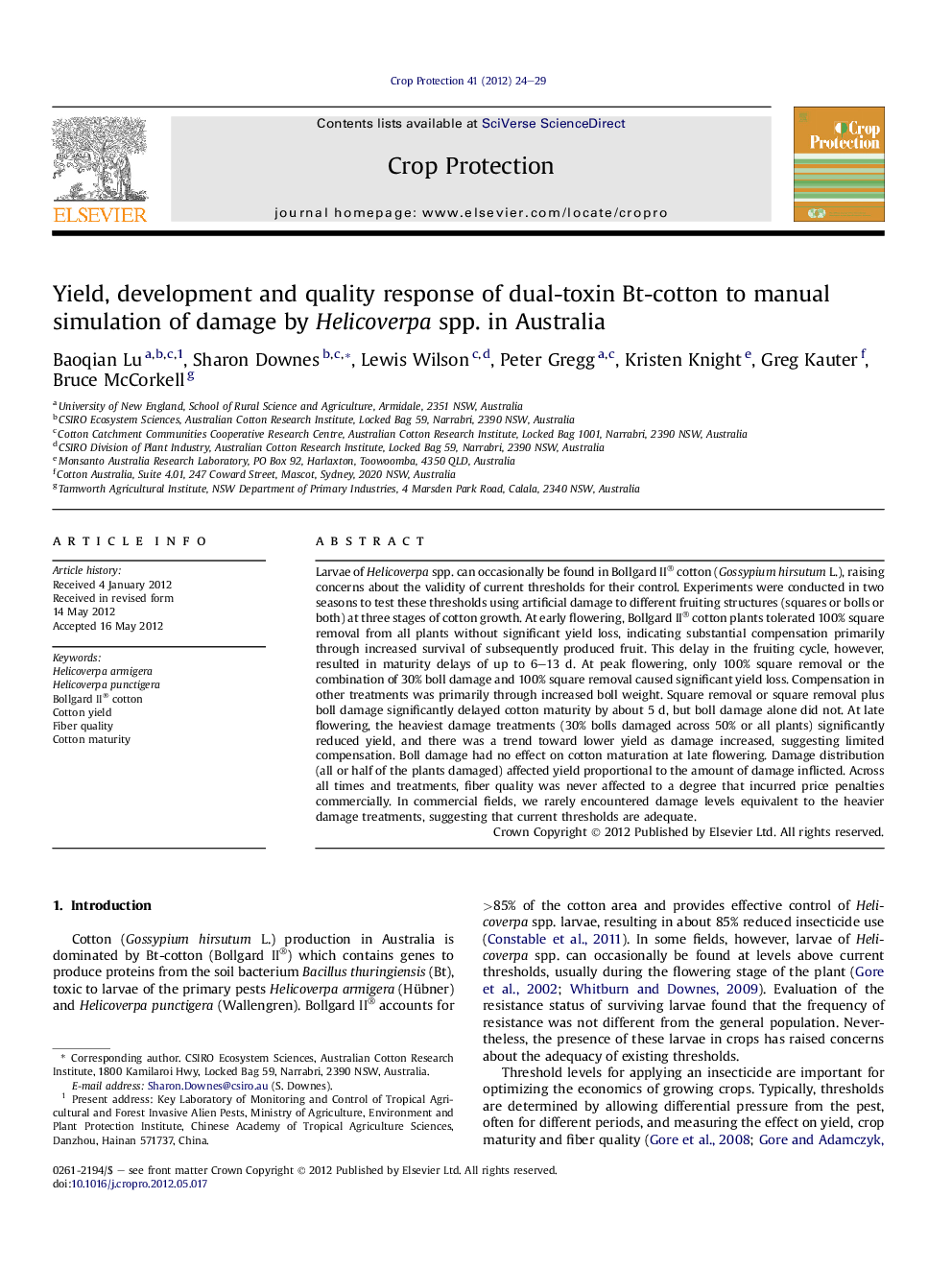| Article ID | Journal | Published Year | Pages | File Type |
|---|---|---|---|---|
| 4506210 | Crop Protection | 2012 | 6 Pages |
Larvae of Helicoverpa spp. can occasionally be found in Bollgard II® cotton (Gossypium hirsutum L.), raising concerns about the validity of current thresholds for their control. Experiments were conducted in two seasons to test these thresholds using artificial damage to different fruiting structures (squares or bolls or both) at three stages of cotton growth. At early flowering, Bollgard II® cotton plants tolerated 100% square removal from all plants without significant yield loss, indicating substantial compensation primarily through increased survival of subsequently produced fruit. This delay in the fruiting cycle, however, resulted in maturity delays of up to 6–13 d. At peak flowering, only 100% square removal or the combination of 30% boll damage and 100% square removal caused significant yield loss. Compensation in other treatments was primarily through increased boll weight. Square removal or square removal plus boll damage significantly delayed cotton maturity by about 5 d, but boll damage alone did not. At late flowering, the heaviest damage treatments (30% bolls damaged across 50% or all plants) significantly reduced yield, and there was a trend toward lower yield as damage increased, suggesting limited compensation. Boll damage had no effect on cotton maturation at late flowering. Damage distribution (all or half of the plants damaged) affected yield proportional to the amount of damage inflicted. Across all times and treatments, fiber quality was never affected to a degree that incurred price penalties commercially. In commercial fields, we rarely encountered damage levels equivalent to the heavier damage treatments, suggesting that current thresholds are adequate.
► We verified Helicoverpa spp. thresholds for Bollgard II cotton in Australia. ► We manually damaged plants based on actual patterns observed in the field. ► Extreme levels of damage resulted in slower maturity but did not lower yields. ► Across all times and treatments fiber quality was never significantly affected. ► The current commercial thresholds for Bollgard II® cotton are adequate.
